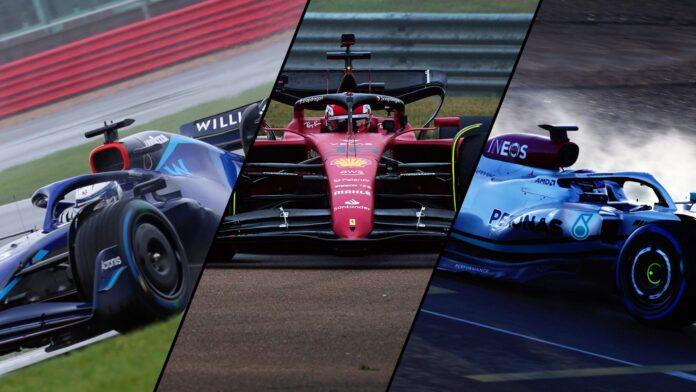Why do some teams have ‘gills’ on their sidepods, why have some teams chosen pullrod over pushrod suspension, and why do the 2022 F1 cars look so different? Mark Hughes investigates after AlphaTauri, Williams, Ferrari, and Mercedes unveiled their cars over the second week of 2022 Formula 1 car launches – with technical imagery from Giorgio Piola.
As more of the 2022 cars have broken cover in the last week – either in official launches or, in the case of Red Bull and Alfa Romeo, out on the track for shakedown runs – so a clearer picture is emerging of what are the technical trends and where the points of differences lie.
The most visually striking point of divergence is probably that of the method of bodywork cooling used. Both Aston Martin and Ferrari have committed heavily to gill cooling on the upper surface of their sidepods – something allowed for the first time since it was banned in 2009 – while others have directed it through tunnels to exit from big outlets at the back of the car.
But at least one of the cars with full rear exits has a bodywork blanking panel atop the sidepods, suggesting that a gilled section will be fitted there in the hotter races.
The hot air, which has just been through the radiators, is aerodynamically not useful. Its energy has been spent and the contrast in temperature with the ambient air creates a very disruptive flow. This is why neither the Ferrari nor Aston Martin feature the heavy downward ramp of some other cars where the downward inclination is used to accelerate the airflow to the space between the rear wheels and the diffuser exits of the venturi tunnels. Instead, they have heavily undercut sidepods to do that job, leaving the top surface to vent the hot air in a relatively harmless area.
In the cars with conventional cooling exits at the rear – usually around either side of the exhaust tailpipe – the air is being directed around the beam wing.
Read the Full Story here formula1


